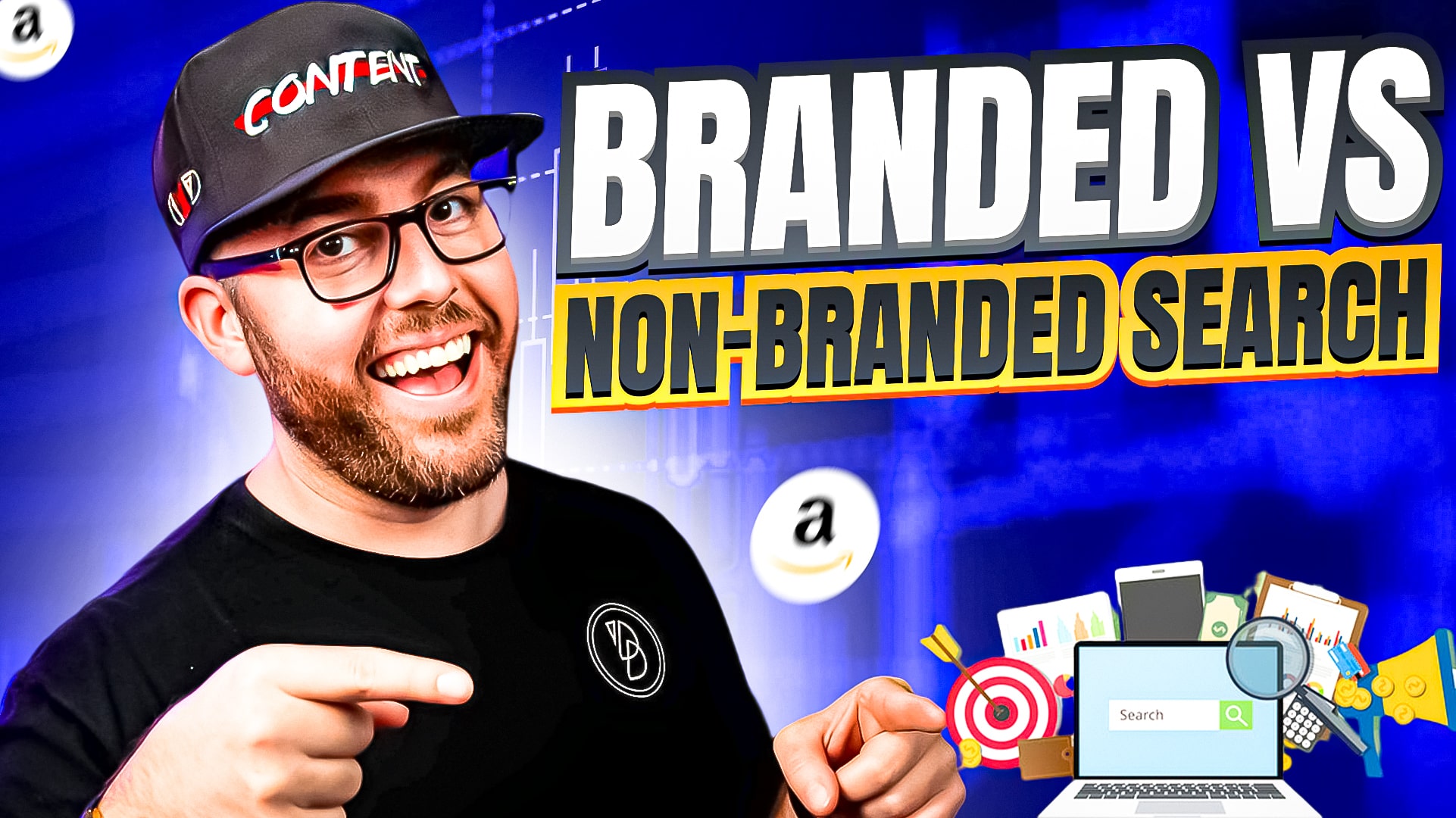
Learn how to efficiently attract your target market by connecting with users who are actively searching for your services or products. By optimizing your website to appear in relevant search queries, you can improve your online visibility and get potential customers to visit your website.
Difference Between Branded Search and Non-branded Search
To maximize your chance for success as a business owner, you need to leverage your digital presence and SEO capability. If you’re not sure where to start, here are some tips:
When it comes to searches, you need to first understand how to distinguish between a branded vs. a non-branded search.
A branded search is a customized search that explicitly mentions your business—it includes your brand name, your products, or your services. Moreover, it’s a personal nod to your brand recall and validates the customer familiarity and loyalty that you have acquired in your years of business.
On the other hand, a non-branded search is a query without any specific reference to your brand. While not easy to master immediately, it provides an excellent opportunity to attract new customers who may not be aware of your brand just yet.
How they will eventually work for you depends on your objectives and target audience. If you’re trying to build brand awareness, a non-branded search can help cast a wide net and attract website visitors.
But if you’re looking to expand your existing customer base and build more brand loyalty, a branded search may be the right tool for you.
Why Optimize for Non-branded Search
While many people might not know your brand, they might be in need of your products or services. Optimizing for non-branded search is therefore the best way to attract these people.
That’s because, without any reference to your business, they specifically search for keywords that match your profile. By using these keywords, you can attract prospects to your site and convert them to loyal customers.
Why Optimize for Branded Search
The power of branded search lies in attracting those who are purposely searching the internet for you by seeking exact information about your brand, company, product, or service.
This may also include product or service reviews, brand comparisons, and marketing or advertising campaigns, among others.
With the help of branded search, you are able to:
- Get closer to people who intend to purchase– You can help potential customers decide to go for your brand. Sometimes, people search for you because they want to figure out if you are the best option for them. Through a branded search, you can nix doubts or concerns that are holding them back from choosing your brand, provide solutions to their pressing needs, and ultimately build trust.
- Inform and update your existing customers– Keep your customers in the loop about your latest activities, product developments, or any important industry updates. An informed customer is a happy customer, and it helps to continue building strong and long-lasting relationships with them.
- Be a trusted resource for the press – Optimized branded searches help you and your business to become top of mind for valuable media coverage, which is relatively free PR for you. You become a sought-after information source for all things that are relevant to your industry – a real thought leader and trusted authority in your field.
- Know that people are genuinely interested in you – A branded search proves that people have known and heard of you, and are keen to know more about what you offer. They are already primed, and it’s up to you to connect, engage and convert.
How to Optimize for Branded Search
Check out the four basic steps in optimizing your website for branded search:
1. Find related keywords for your business
For this exercise to work, you should categorize your keywords as:
- Keywords you rank for
- Keywords you don’t rank for
Keywords you rank for
It’s best to use an SEO tool such as SemRush to find keywords that you rank for. You just need to type your domain, then go to Organic Keywords, and insert words or phrases that best represent your services or products. You also need to identify the country that you’re specifically targeting.
Tip: No need to worry about typos or misspellings because Google’s algorithms autocorrect them once you complete the required information.
Extract the list of keyword results and take note of them using a spreadsheet, like Google Sheets.
Keywords you don’t rank for
To create a list of keywords you don’t rank for, you need to combine and compare the list of branded keywords you rank for with a list that contains all branded keywords for your business.
Using your preferred keyword tool, input the first list of branded keywords, select the same info you’ve supplied before, and press “Enter.”
Review the Matching Terms report, where you will find a list of all your branded keywords.
Now it’s time to compare the keywords you rank for with the new list of all keywords to get the branded keywords you don’t actually rank for.
Here are the steps:
- Start by exporting the list you have.
- Import the new list on the same spreadsheet as your first list.
- Add an additional column and label the column “Do we rank?”
- Add this array formula into the first cell of that new column: =ArrayFormula(COUNTIF(Ranking!A2:A, B2:B)=1)
The keywords you rank for will be under “Ranking.” Meanwhile, the cell ranges will be the column with your keywords.
With the formula in place, all “true” will automatically appear in the entire column if you already rank for a given keyword. On the other hand, “false” will prompt if you don’t.
2. Choose keywords that are target-worthy
Know how to identify keywords that are worth targeting. These three are the most common categories:
- Underperforming keywords – These keywords do not perform so well, but can be improved in terms of rankings. Once they do, traffic from the search engine results pages, or SERPs, will increase.
- Pages with mismatched intent – These pages do not provide what people came to the website for.
- New keywords – New keywords are valuable because they can generate additional traffic.
Underperforming Keywords
Underperforming keywords in branded search are those that don’t top the search results. But with strategic planning and excellence in execution, they can improve and rank higher.
When you check your list of keywords, click on “Current Position”, and sort them from Z to A. Those that don’t rank high provide a window of opportunity for you. Mark and monitor them.
Consider creating an in-cell dropdown list. You may also refer to the “Volume” column to see if a certain keyword gets any search demand in your location of choice.
Pages with mismatched intent
Next, it’s time to identify keywords that rank #1 or rank in the top 10 and learn how to strategize around search intent.
For example, if people are looking for a high-resolution image of a specific product on your page but you don’t have it in place, it can be highlighted as “mismatched intent.”
Optimizing branded search to address this need shows genuine care to help your customers find what they’re looking for.
New keywords
Open your list of all branded keywords and show only “false” results. Sort them by search volume to come up with the most valuable first.
Identify new keywords that relate to your brand, so you can be better informed about what updated words people use to search for you. From there, you can strategize on how to better improve your services, especially compared to your competitors.
3. Influence rankings by optimizing existing content or creating new content
What do you want to do – make use of existing content or start from scratch? The keyword list will influence that decision.
- If your keywords are marked as “underperforming” or “mismatched intent,”you need to optimize content specifically for search engines.
- If your keywords are “new keywords,” you likely need to create new content.
4. Add internal links
Internal links help in (re)crawling, discovering, and indexing pages. It makes it easier for Google to identify and understand your page profile. And it also helps you pass link equity.
Here are three website places where you can add links for better branded search optimization.
- Site navigation– This is the navigation on top or at the footer of your website.
- Valuable pages– These are pages that usually generate most of the traffic or get the most engagement (e.g., homepage, products page, etc.)
- Pages where your keywords are – This is where your keywords are prominently on display, like a blog, newsroom, or insights page.
Final Thoughts
When your company wants to continue growing its digital presence because it has proven to drive business success, it is important to invest in branded and non-branded search.
They play an important role in identifying and understanding customer behavior and their intent to avail or purchase a product or service. That’s why it’s important to know all relevant branded queries so you can adjust your strategy and serve your customers better.
But as always, SEO success cannot be achieved overnight. It has a learning curve, one that usually takes time.
The key is to proactively learn and relearn how SEO works, use advanced tools and software, and monitor ranking progress regularly.
When people search for you by name, it’s a clear indication of trust and loyalty. By optimizing your website for branded keywords, you can ensure top search results, while reinforcing your brand identity and making it easy for customers to find you.
